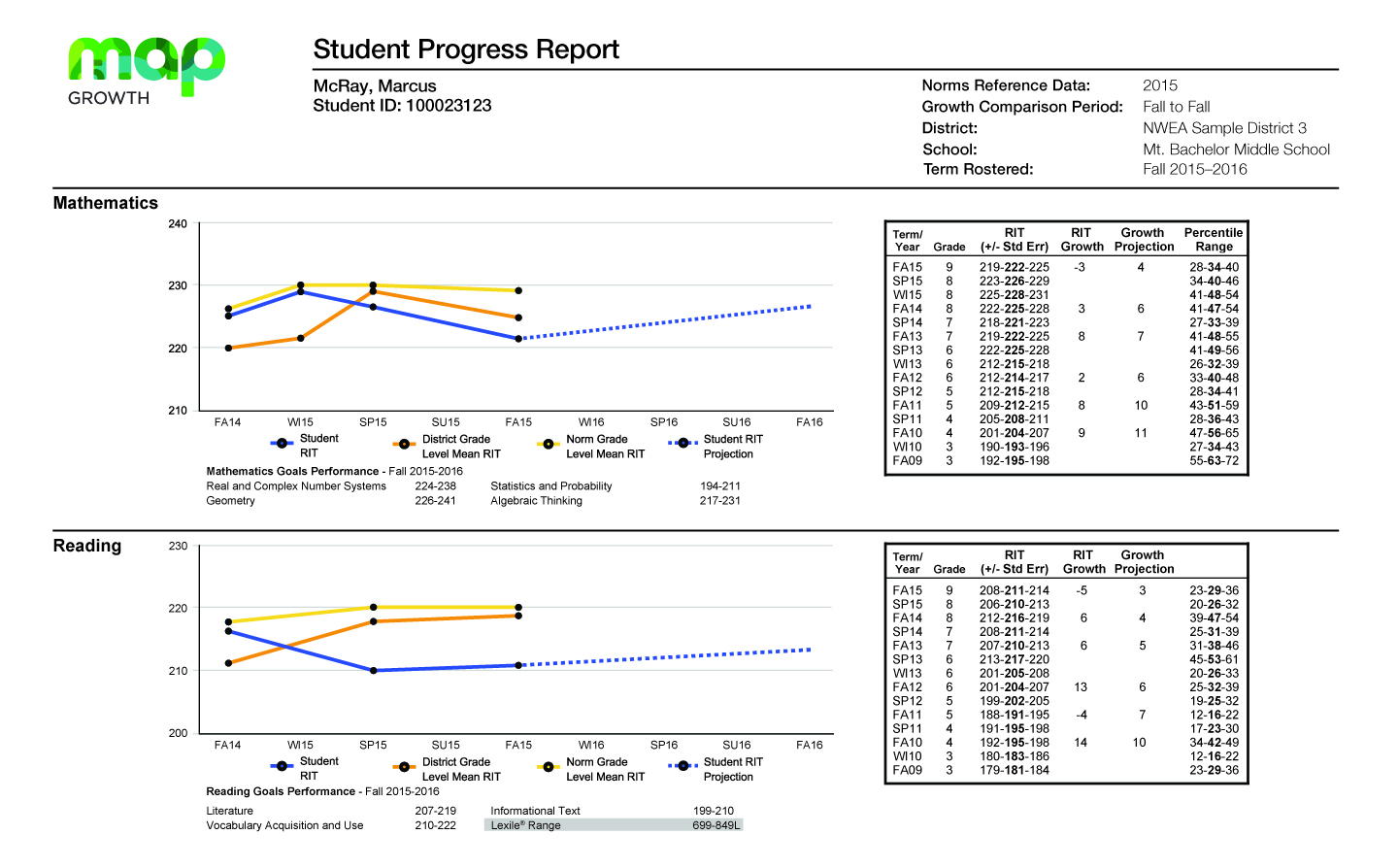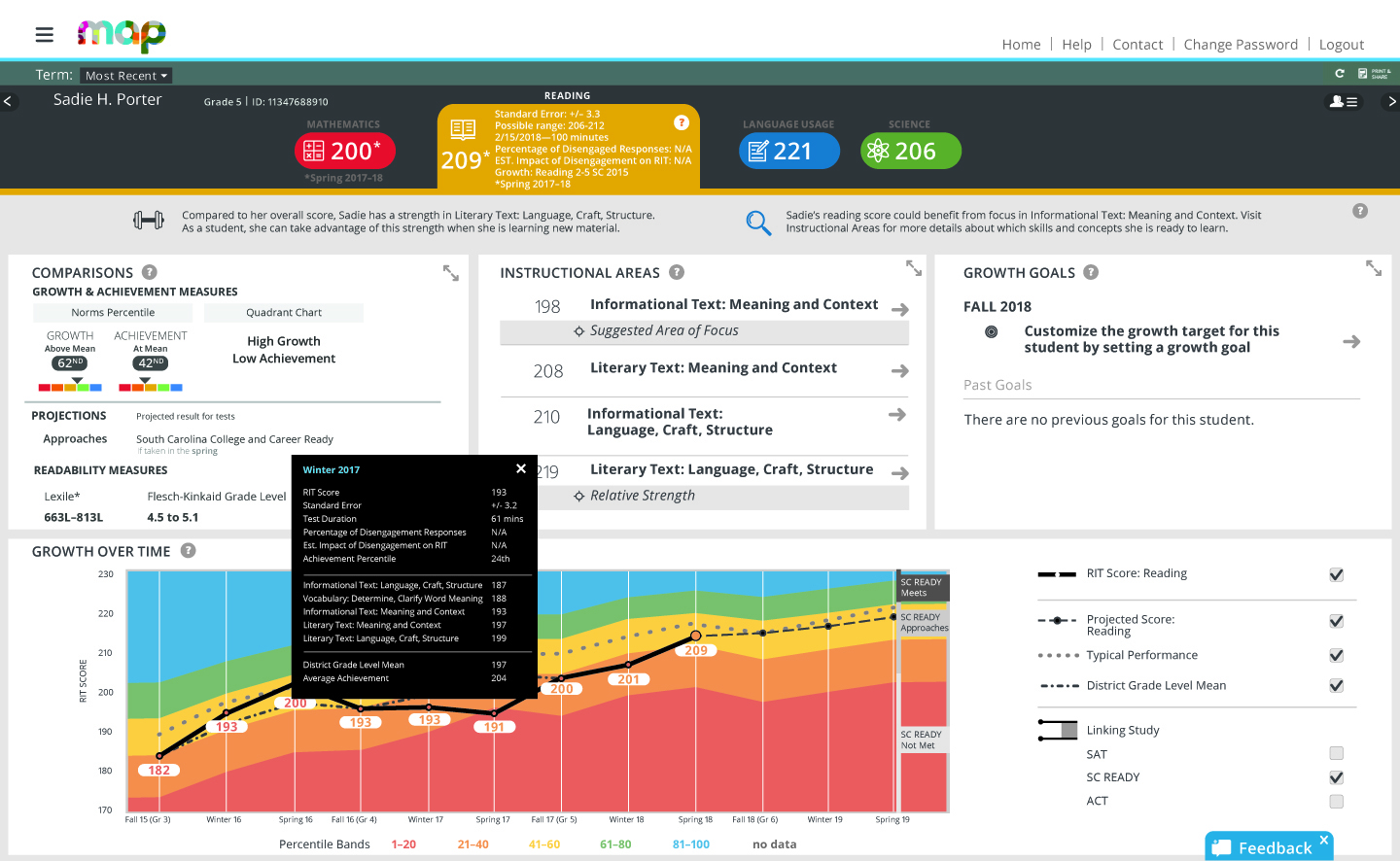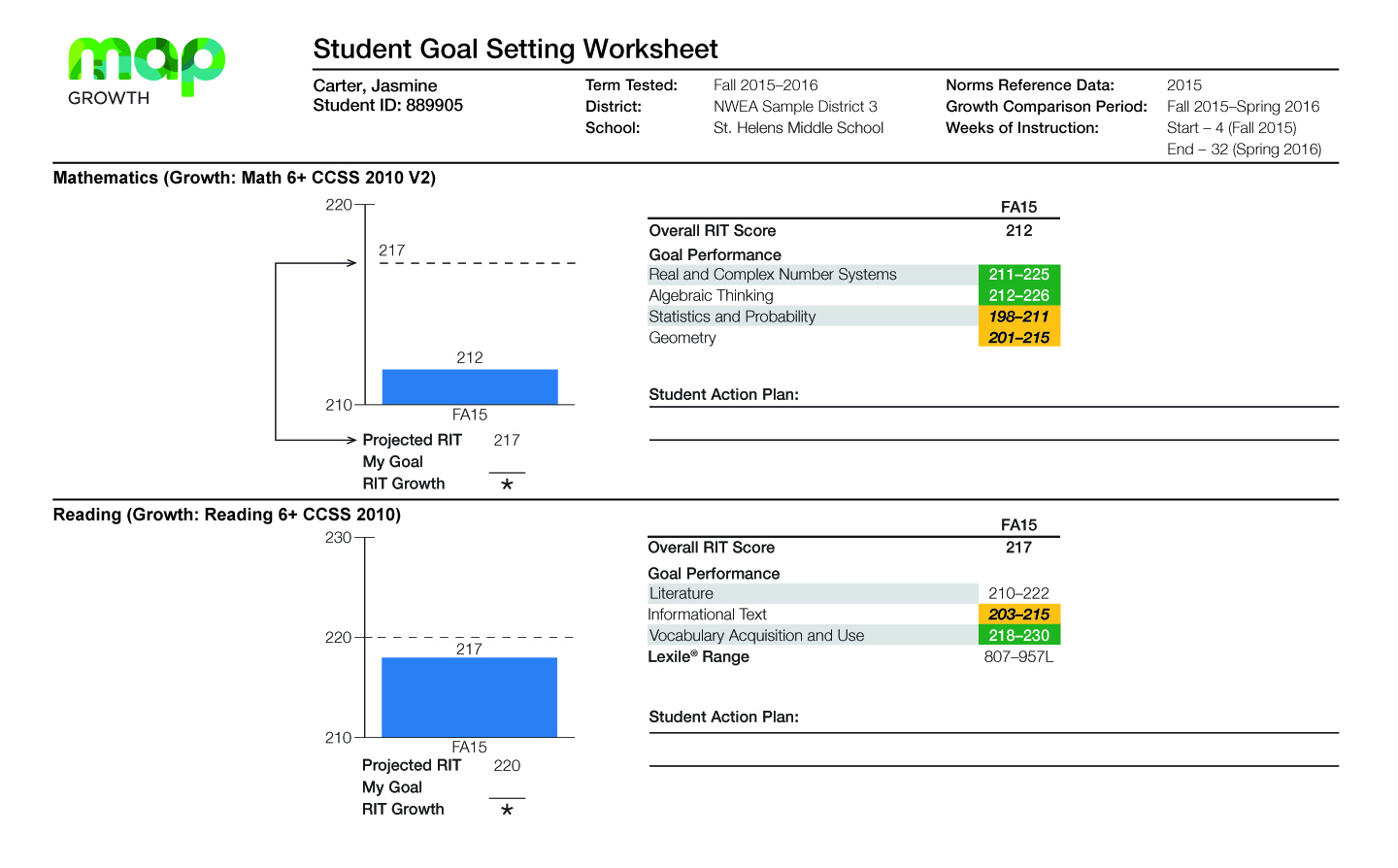 The MAP® Growth™ K–12 interim assessment provides essential information about a student’s continuum of learning and growth trajectory. MAP Growth provides real-time information that helps teachers teach, students learn, and administrators lead. Many schools administer the test in fall, winter, and spring for a consistent longitudinal measure of student growth. It offers a clear picture of your students’ learning and readiness for college and careers.
The MAP® Growth™ K–12 interim assessment provides essential information about a student’s continuum of learning and growth trajectory. MAP Growth provides real-time information that helps teachers teach, students learn, and administrators lead. Many schools administer the test in fall, winter, and spring for a consistent longitudinal measure of student growth. It offers a clear picture of your students’ learning and readiness for college and careers.
With parent-teacher conferences coming up on the fall calendar, teachers might be thinking about how best to use the actionable assessment data that comes from MAP Growth to speak to parents about their students’ progress. While many of the reports that MAP Growth delivers are valuable, there are three, in particular, that provide valuable insights and are often shared with parents.
1. Student Progress Report
Just as the title says, this report shows a student’s term-to-term growth and can be used to compare a student’s RIT scores to the district’s average score, as well as to national norms. Below the graphs, the report outlines for students and parents the particular areas of strength and concern within the subjects of math and reading.
(Click the image for larger view in new tab.) 2. Student Profile Report
2. Student Profile Report
This report offers both a deep dive for teachers or a quick snapshot for parents. The main student profile view (shown below) highlights the student’s performance in all subjects across the tabs at the top. For each subject area, parents can see a student’s scores relative to national norms and projections for how they will do on their state summative test. (This snapshot for each subject is often provided to parents as a printout or pdf.) Teachers can use the instructional areas module to see where they need to focus their instruction for the student. They can also use the interactivity of the report to set and track growth goals with students over the course of the school year. (For an overview of everything the Student Profile report offers, check out this short video.)
(Click the image for larger view in new tab.)
3. Student Goal Setting Worksheet
This report can be used to engage students and parents in their students’ learning by explaining areas of strength and concern. The bar graphs allow students to see their current level, as well as give them a goal to work toward. To the right of the graphs, the green categories show areas of strength, and the yellow categories are areas to improve.
(Click the image for larger view in new tab.)
 These three reports, and others, deliver essential information that can be used to improve both teaching and learning and to provide essential communication with parents. For more details on how one teacher uses her favorite MAP reports with students and parents, read How NOT to get overwhelmed by data: Teacher reports to use throughout the year.
These three reports, and others, deliver essential information that can be used to improve both teaching and learning and to provide essential communication with parents. For more details on how one teacher uses her favorite MAP reports with students and parents, read How NOT to get overwhelmed by data: Teacher reports to use throughout the year.
Teachers who are looking for additional resources for explaining MAP Growth assessment data in parent-teacher conferences can also refer to these links:
- A Parent’s Guide to MAP Growth is a one-page handout that can be easily printed or emailed; it is available in 10 additional languages here on our user community;
- MAP Growth Parent Toolkit video, a short overview of how MAP Growth works;
- Parent Toolkit page on nwea.org, featuring some frequently asked questions about MAP Growth.